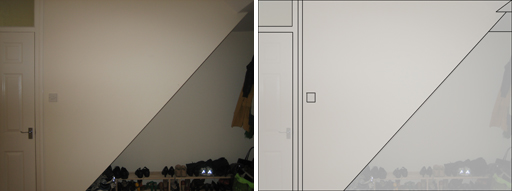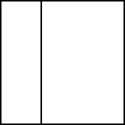3.1.1 Structure
Some things we own consist of only one part. Here we’re thinking of a metal spoon, a wooden walking stick or an attractive pebble picked up on a beach. But most things we own consist of many parts. Take a bicycle (Figure 5), for example. It has wheels, a frame, a seat, and mudguards. Even parts such as the brakes consist of many smaller parts fixed together – brake pads, wires, nuts and bolts. In all cases these objects have a structure. In the case of the spoon it has only one part and this part is the structure. For the bicycle it is the ‘assembly’ of the many parts that creates the structure.
Just having all the necessary parts for a structure is little use. This is like having all the parts for your bicycle brake but not putting them together. They wouldn’t work – the bicycle wouldn’t slow down when you applied the brake. What’s important is the organisation given to these parts. This idea of creating organisation by assembling parts into structures lies at the heart of design composition.
Activity 10 Make a paper composition
Take four square Post-it® notes or sheets of paper. Using faint pencil lines divide each sheet into thirds horizontally and vertically as shown in Figure 6a.

Using this grid as a guide draw a straight line on each sheet. For this use a pen so that your lines stand out clearly. Your lines must start and finish where a grid line meets the edge of the paper, that is, they can be vertical, horizontal or diagonal (see the examples in Figures 6b–6e).
Place the four sheets in a line and rearrange them until you produce a composition you like. You can turn sheets around and change the order. Then give a reason why you like this composition. Perhaps it reminds you of something?
In this activity each sheet of paper with its single line was a part. You organised the parts into a visual structure by placing them in a line, and this created a composition. During this arranging activity you tried to think about any preferences you had, or what the shapes reminded you of. You were ‘reading’ the compositions just as you might read a written sentence and it began to appear as more than just ‘abstract lines on paper’.
We could have taken this further. We could have introduced more lines on each sheet – and perhaps more sheets. Just like the bicycle example we might find ourselves building assemblies of assemblies to make complex structures.
Also asking you to divide the squares into thirds wasn’t a random choice. We’ll return to the power of using thirds in composition later in this element.
This exercise also has applications in real-life design. Look around the room you are in right now. Can you identify an area that could be simplified and pictured with just a few lines? Figure 7 shows an example.

The photo and abstraction in Figure 7 demonstrate that most real-life situations can be reduced to simple visual compositions. Of course, such simplification means that some parts are left out, but this editing is a normal part of design thinking. Simplification also means that there is likely to be some repetition. In Figure 3 some of the horizontal and vertical lines are repeated in the abstraction, but this isn’t a bad thing. In fact, it is another important part of design composition.






